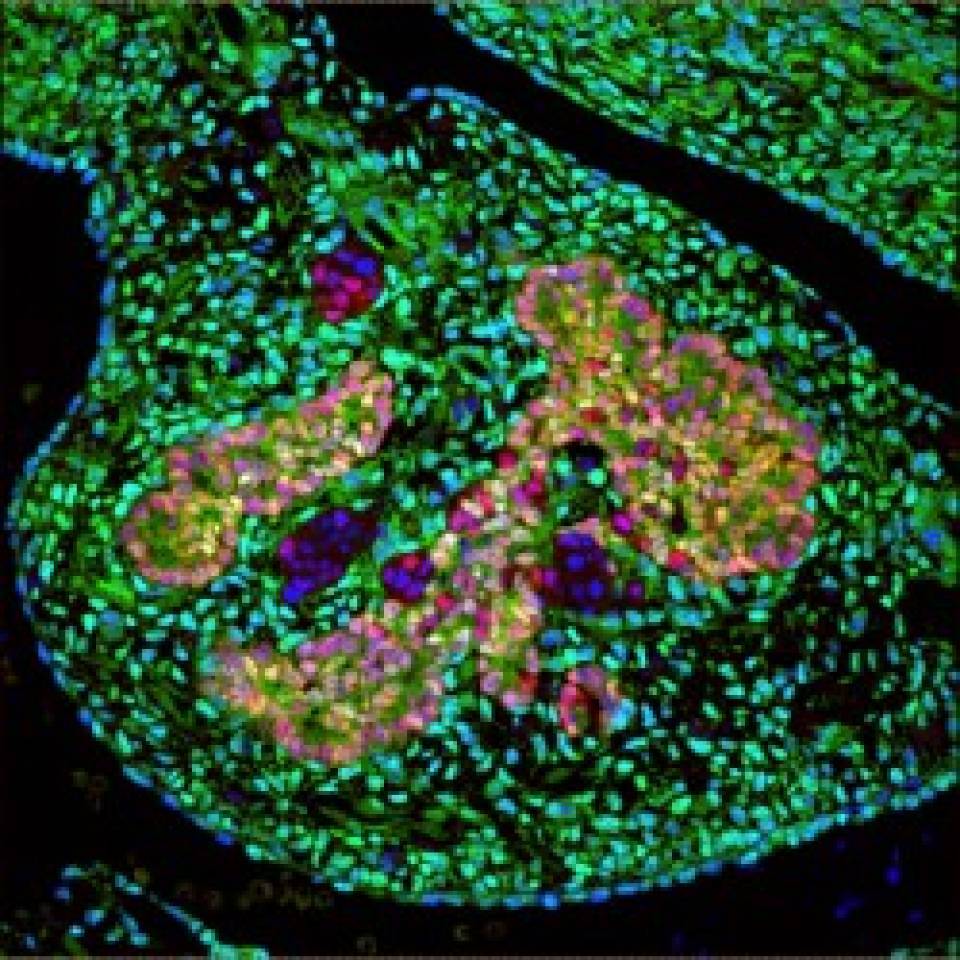The study of the organ formation in humans, the organogenesis, is very important for the attempts to treat diseases by regenerating the defective organ. One limitation in studying organogenesis is the lack of tissue to carry on the studies and that is the reason why the regulatory mechanisms involved are still unknown. In the case of pancreas, previous studies in animal models have discovered several transcription factors that regulate its embryonic formation. However, little is known about how the developmental programs are activated.
For example, in certain forms of diabetes, there is destruction of insulin-producing cells, and many researchers have artificially tried to produce them in order to implant them and prevent the administration of insulin. To have functioning cells is necessary to deeply understand the instructions used by the body to produce them during the fetal development.
In the case of pancreatic cancer, a disease with a very poor prognosis, it is known that cancer cells often transform into a cellular type similar to embryonic cells. This could be due to the activation of genomic "switches" of embryonic pancreas.
In the study published in the journal Nature Cell Biology, researchers have developed the regulatory map of embryonic stem cells that give rise to all cellular subtypes in the pancreas. The study has characterized both the genes and the distant regions of the DNA strand that enhance or disable the expression of these genes. The work was carried out in a new in-vitro model of embryonic stem cells differentiated to pancreatic progenitor cells, in two animal models (zebrafish and mice) and in human pancreatic tissue. The ability to compare the model of stem cells with human embryonic pancreatic tissue validates it for the study of this organ from now on.
While elaborating the map, researchers have discovered a novel transcription factor that was not associated before with the embryonic pancreas development, and have seen that if the transcription factors are disturbed, the corresponding enhancers do not work properly. This finding will help finding mutations that may be linked to the defective development of the pancreas.
"Until now most of the human genome studies have focused on a tiny part of the genome that contains the genes, but now we know that there are hundreds of thousands of genomic elements that are very important because they activate or deactivate them. These switches have very important implications for the understanding and treatment of diseases such as diabetes and cancer," explains Dr. Jorge Ferrer. The group led by Dr. Ferrer at IDIBAPS recently published in the journal Nature Genetics, defects in these regions that act as "switches" (enhancers)and that cause diabetes.
The study involved researchers from IDIBAPS, Imperial College London, the Universities of Cambridge and Manchester, the Andalusian Center for Developmental Biology and Institute of Molecular and Cellular Biology of Oporto. "It has been a very collaborative work and it could not have been accomplished without the participation of all groups," says Dr. Meritxell Rovira, one of the 5 first co-authors of the study. "This has allowed us to functionally validate the results obtained computationally using two animal models (mouse and zebrafish)," she adds.
"This study provides a platform that is now available for the scientific community to study mutations in these regions of the genome that, for example, predispose to type II diabetes or pancreatic cancer, or that may lead to defects in the development of this body," explains Dr. Inês Cebola, one of the first authors of the study and researcher in Dr. Ferrer's group at Imperial College London.
Picture: Confocal microscopy image of mouse embryonic pancreas (E12.5 stage). (Author: Miguel Ángel Maestro ©)
Article reference:
TEAD and YAP regulate the enhancer network of human embryonic pancreatic progenitors
Inês Cebola, Santiago A. Rodríguez-Seguí, Candy H-H. Cho, José Bessa, Meritxell Rovira, Mario Luengo, Mariya Chhatriwala, Andrew Berry, Joan Ponsa-Cobas, Miguel Angel Maestro, Rachel E. Jennings, Lorenzo Pasquali, Ignasi Morán, Natalia Castro, Neil A. Hanley, Jose Luis Gomez-Skarmeta, Ludovic Vallier & Jorge Ferrer
Nature Cell Biology (2015) doi:10.1038/ncb3160

